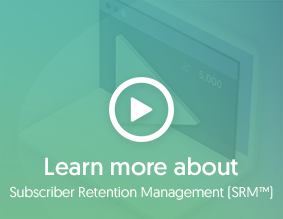 Credit: DialogTech
Credit: DialogTech
In this post, we are going to dive into the specifics of out-of-home video viewing. Data shows that millennials don't mind watching long-form video outside their homes.
As OTT, SVOD, and live video streaming continue to thrive, more and more people understand the flexibility they offer.
Today's tech-savvy, go getting millennial is on the go pretty much all of the time, and as a result of this, many of them consume their entertainment out of the home while in transit, which means they like to watch their favourite flicks, sports, and box sets on mobile devices.
Interesting facts about out-of-home video viewing
There is a common misconception that people will only watch short-form content out-of-home and long-form content while at home, however, it's not quite as simple as that. According to a recent paper from nScreenMedia, in-home viewing through connected devices is dominated by short-form, rather than long-form content. 53.5% of video starts in the home are for short content, 27% for long, and 19.5% for live streams.
Out-of-home viewing seems to be more balanced between the consumption of short, long, and live video. Short content share of mobile video starts comes in at 39%; long form covers 36% of starts, and a quarter of video starts are for live content.
It seems that the dominance of short-form content in the home through connected revolves around the television - people like to use the largest screen available to them. But, when out-of-home, people will turn to their most practical mobile device, which is usually their smartphone.
Quality concerns surrounding out-of-home viewing
There's no doubt that out-of-home viewing is on the rise, but the biggest problem is quality. In-home viewing offers a far more superior user experience than out-of-home.
According to the same paper, buffering ratio, poor visual quality, and underperforming WiFi are an out-of-home users' biggest gripes. As a result of these issues, engagement drops and many users simply bounce off a video stream and move onto the next.
Besides the obvious UX issues of out-of-home viewing, poor streaming quality is actually proving bad for people's health. When trying to relax and get lost in a film, event, or programme, many people are getting mad with the poor levels of service, rising stress levels; this is now known as 'buffer rage.'
Nielsen hopes to measure out-of-home viewing
As out-of-home viewing covers such a broad area regarding geographical reach and viewing mediums, measuring its growth isn't as straightforward as it is with traditional television. But Nielsen has found a solution.
The company's new Portable People Meter, which is set to launch in 2017, will be released in four markets and offer a peek at how modern viewers consume online content while on the move.
By measuring viewing behaviors from panelists wherever they go, and combining the metrics with its National TV rating panel for in-home viewing, Nielsen will be able to get a grasp on how the modern consumer enjoys their entertainment out-of-home.
As the world evolves, so will out-of-home viewing. Watching content on the go fits in with today's fast-paced lifestyle, but to ensure it remains a healthy, prosperous, and desirable option, it is imperative that broadcasters and providers invest in improving streaming quality, interfaces, and infrastructure, otherwise they will be left in the dust.
Find out why end-users don't mind watching live sports on mobile devices:



